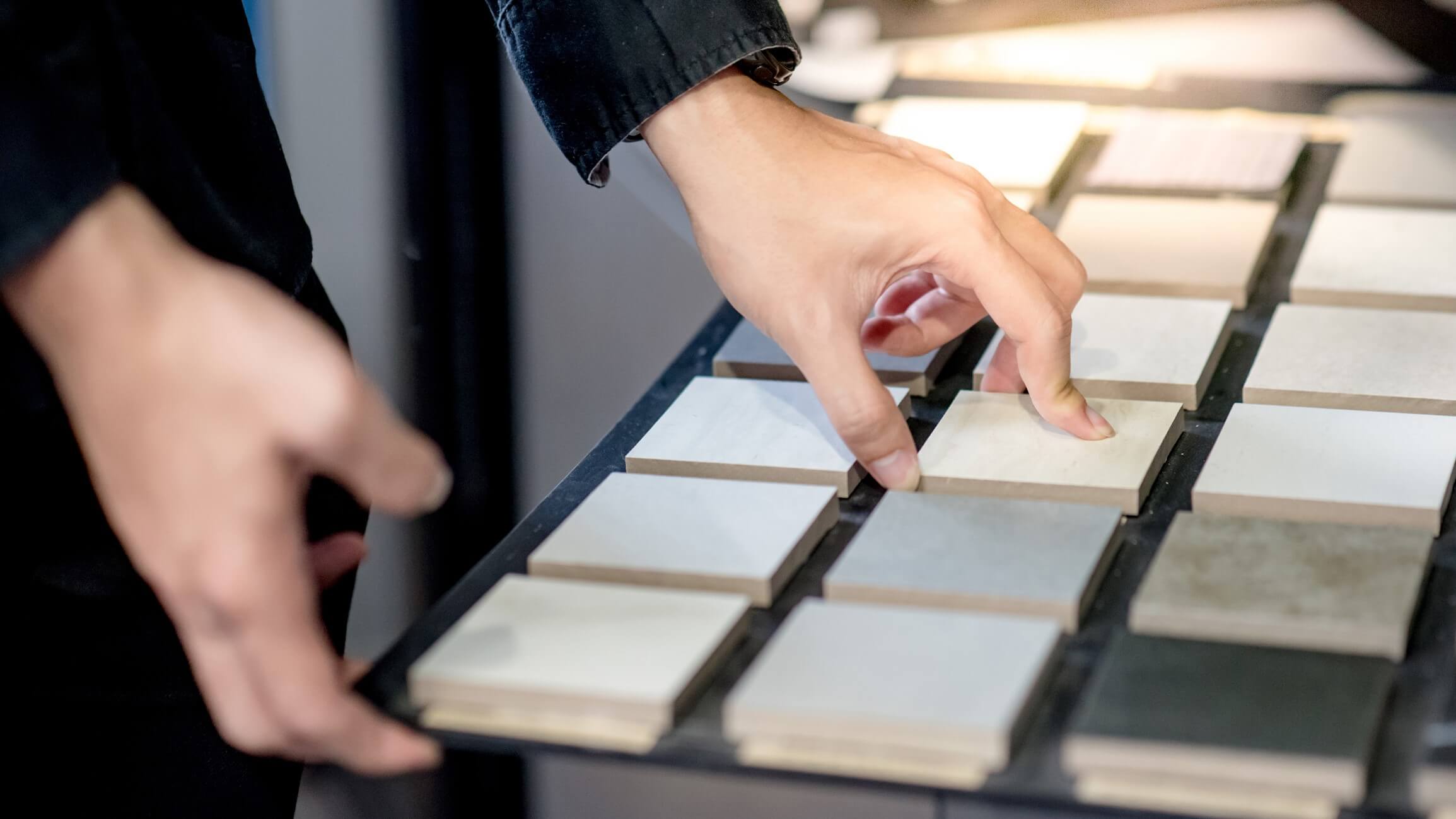How to Choose the Best Tile Flooring for Your Bathroom
Tile has always been a popular flooring choice for bathrooms. This is for a good reason. Porcelain tile is waterproof, cost-effective, and easy to clean. And with ever-growing options in color, texture, and patterns, there is endless variety. Often too many choices can be mind boggling, but Atlas is here to help make your decisions more streamlined. This quick guide can help you on your tile journey.
Porcelain vs. Ceramic Tile
There is some debate on which material is better for flooring; porcelain or ceramic. There isn’t one that is inherently better for bathrooms, but they do have varied qualities. Here are the main differences to consider:
1. How Are They Made?

While either porcelain or ceramic tile is great for bathroom flooring, just make sure it is rated for flooring based on manufacturer specifications.
They are both made of clay. However, porcelain tile is made of denser clay and fired at higher temperatures making it stronger and less porous than ceramic. Therefore, porcelain is excellent for outdoor use, but always well suited for any indoor job. While ceramic may not be quite as strong as porcelain, it is typically fine for bathrooms because of how it will be used.
2. Which is Easier to Clean?
Porcelain tile is more stain and scratch resistant. Although the absorption rate of porcelain is lower, it also depends on the glaze and finish of the tile. Ultimately, if your glaze is rated for bathroom flooring, the debate between ceramic vs porcelain is not as important as color, texture and style. Bathrooms are not typically high-traffic areas like foyers, kitchens and laundry rooms. Thus, either type will work, and should be similar in clean-ability.
3. Is One More Durable?
Porcelain is more durable, but tile’s durability depends on the installation too. Tile flooring is really only as strong as the underlayment. It’s essential to have the proper installation to ensure the overall lifespan. Schluter Ditra under the tile can help not only as an uncoupling membrane, but also as waterproofing. You can also use Ditra Heat membrane and wire to have heated bathroom floors!
While either porcelain or ceramic is great for bathroom flooring, just make sure it is rated for flooring based on manufacturer specifications. We are happy to help with this! Natural stone can also be used in bathrooms. And, we can help educate you regarding the pros and cons to help you make a decision based on your needs.
Bathroom Flooring Style
Traditional vs. Modern
‘Traditional’ can mean many things. It can be a classic carrara or stone look, or those old fashioned hexagonal tiles. Traditional can also mean a porcelain wood look, when done right. Mostly, though, traditional means classic and timeless.
‘Modern’ can include texture, size, color, and other elements combined to create your own style and space. Large format tiles are a great way to convey a modern look. Not to mention, tiles are becoming increasingly larger as the industry improves the manufacturing process.
Big vs. Small
It’s a preference, but here are some pros to both. Small tiles are easier to transport and lay. On the other hand, big tiles are great for big spaces. You need fewer tiles and less grout. It is also a great minimalist look and can give the illusion of a larger room. Bring in your floor plans and we can help you to decide what’s best for your space.
Neutral vs. Flair
The great part about tile is you can do just about any pattern and color you desire! So, you need to ask yourself, what is the purpose behind tiling your bathroom floor? Are you trying to sell your home? Then, a neutral and classic tile with universal appeal is the best way to go. Are you making your house a home? Then, go with the flair and look you love, neutral or not.
Still not sure what look you want? Check out our bathroom Pinterest board for more ideas. We can also help you at our showroom in Arnold, Maryland. At Atlas Marble & Tile, we work with DIY homeowners and contractors alike. Let us help you choose the best tile flooring for your bathroom today.
Share